Like all of you, this weekend at the prerelease marked my first chance to play with Dragons of Tarkir. I spent all day Sunday playing in a sealed event and spellslinging with my deck between rounds, so I really got a chance to put it through its paces as well as to see a lot of other decks and how they worked. Today I wanted to touch on my initial impressions of the format, particularly individual cards that stood out as either over-performing or underperforming compared to my expectations.
Let’s start with some general observations. First and foremost is the color makeup of decks in the format. Even in sealed deck, which is generally slower than draft and offers more incentives to splash due to strong cards in your pool outside of your primary colors, both myself and most of my opponents played two-color decks. I saw some players venturing into tri-color builds supported by Evolving Wilds, but they seemed to stumble against decks with more consistent mana. Without the strong three-color cards from Khans in the format, and with fewer opportunities to pick mana fixers, the average successful deck is much more likely to be two colors.
In the same vein, with more consistent mana and fewer lands entering the battlefield tapped, the format feels faster than before. There are a lot of quality two drops as well as solid combat tricks in nearly every color, which meant that players do a lot more attacking a lot earlier in the game than in the world of morph battles everywhere.
That’s what I did all day, myself: attack early and often. As I mentioned in my article last week, I chose Atarka at the prerelease, and I ended up with a very aggressive deck that felt quite strong. Here’s a look at the cards in it and my thoughts on how they played throughout the day.
4 Atarka Beastbreaker
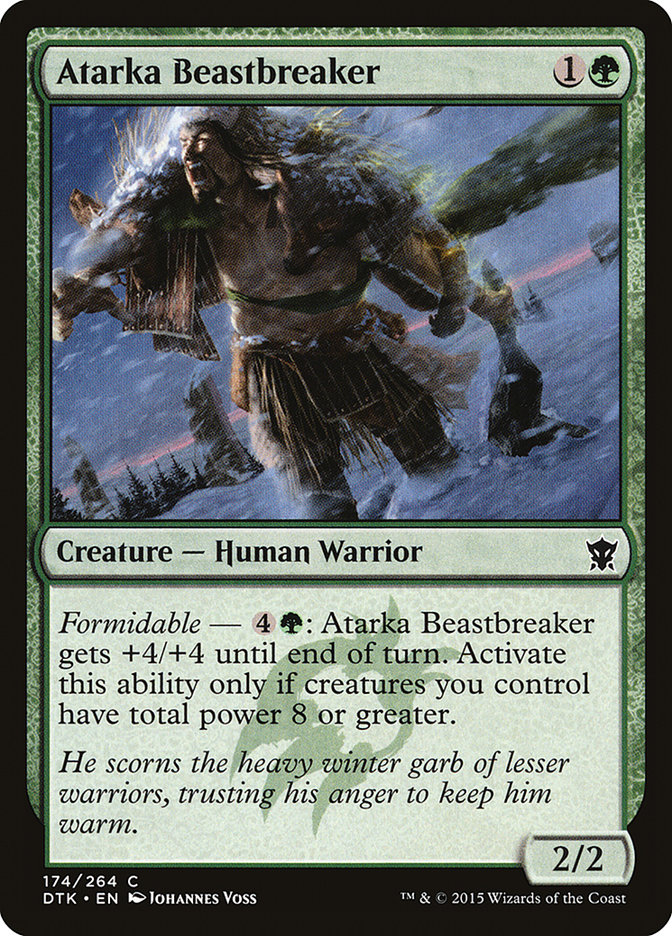
I mentioned attacking early and often, and this is usually how I got that started. The great thing about the Beastbreaker is the fact that it doesn’t get outclassed late in the game. You can play them early, get your licks in, and then start attacking with them again when you reach Formidable and can start pumping them. I will note that I was quite happy that my two drops were 2/2s instead of 2/1s, since there seem to be quite a few 1/3 and 1/4 blockers in the format. I was just able to throw all of my team into them, and would have missed a lot of damage if I couldn’t attack with anything because they’d die.
2 Hardened Berserker
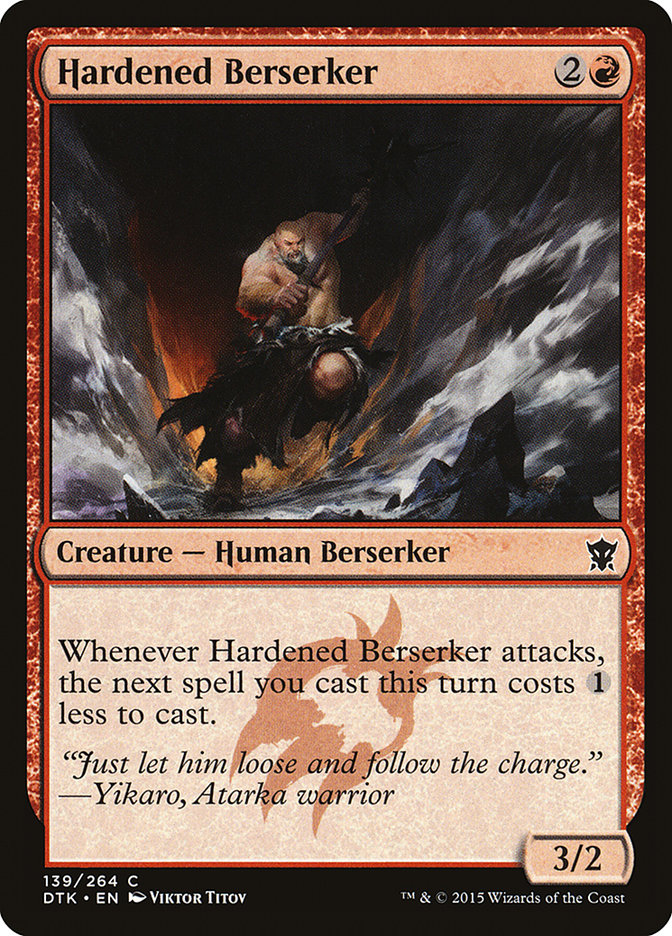
These were fantastic, both hitting relatively hard for their cost and helping generate significant tempo swings with their cost reduction ability. I really liked having two-mana tricks or removal to pair with them, like Tread Upon and Draconic Roar, since I could use the cost reduction from the Beserker’s trigger to kill my opponent’s blocker and while still getting to play another three-drop in the same turn. They also obviously worked very well with my five drops, but I feel like most aggressive decks that want Berserker generally won’t want to play more than a few five-mana-plus spells, so it’s better to focus on the two-mana tricks.
Screamreach Brawler
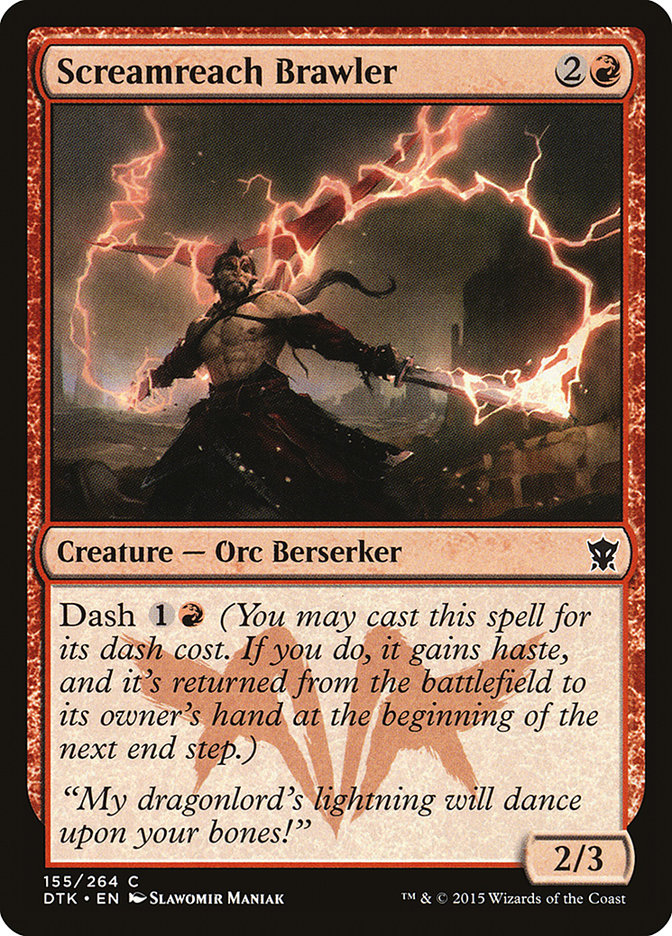
Solid, though unspectacular. It was nice to have a Dash creature to sneak in a few more points of damage in close games. The fact that it is a 2/3 means that it can attack into face-down creatures with impunity, which wasn’t true of most previous Dash creatures. The opportunity to Dash my Brawler into play to set up Formidable for my Beastbreakers came up several times, and let me kill a few of my opponents from a board state that looked relatively safe for them.
Summit Prowler
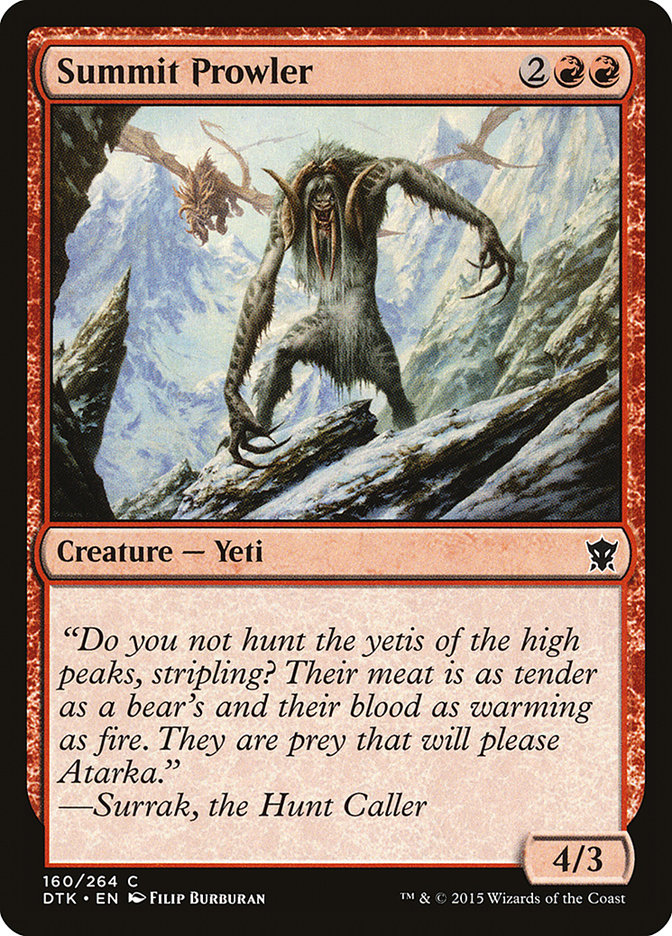
I love the fact that this is the exact same card from Khans of Tarkir except with slightly different art and flavor text. Incidentally, I think Summit Prowler is much better in this format than it was in Khans. The two-color nature of the format means you’re much more likely to be able to support the double-red mana cost on turn four, and there are fewer morph creatures that flip face up for five and six mana and invalidate the Prowler’s 4/3 body. I was very happy with how the card performed throughout the day, which is more than I can ever say for the times I had it in my decks in the old format.
Sabertooth Outrider

While I understand that this is a human riding a cat mount, when I look at the art my focus is on the cat itself, so it’s weird to me that the card’s type is Human Warrior. I mention this because I wanted to call Sabertooth Outrider a big cat, but apparently it isn’t one. In any case, this big cat-being-ridden-by-a-human was awesome for me all day, forcing through damage as either a trampler, a first striker, or both.
It’s important to keep in mind a few things when playing with this card. First of all, its Formidable ability is where a big part of its strength comes from. A 4/2 attacker with First Strike is really difficult for a lot of decks to deal with. With that in mind, you generally want to avoid trading your smaller creatures early on so you can get the Outrider online. You also need to look out for instant-speed effects that might kill your creatures and turn Formidable off when you attack, because doing so will prevent the big-cat-ridden-by-a-human from getting its First Strike trigger even after it’s been declared as an attacker. Similarly, you can’t use combat tricks to pump the Outrider or your other creatures to give it First Strike mid-combat, since it’s a one-time trigger that only occurs when you attack. You can, however, use a pump spell to ensure that you still have Formidable in response to a removal spell that would kill one of your creatures with the ability on the stack. For example, if you attack with Outrider and two morphs and your opponent kills a morph in response to the Outrider trigger, you can still play something like Tread Upon on one of your other creatures – because you’ll still have eight power when the trigger resolves, the Outrider will still get first strike.
Trigger timing rules – aren’t they grand?
2 Stampeding Elk Herd
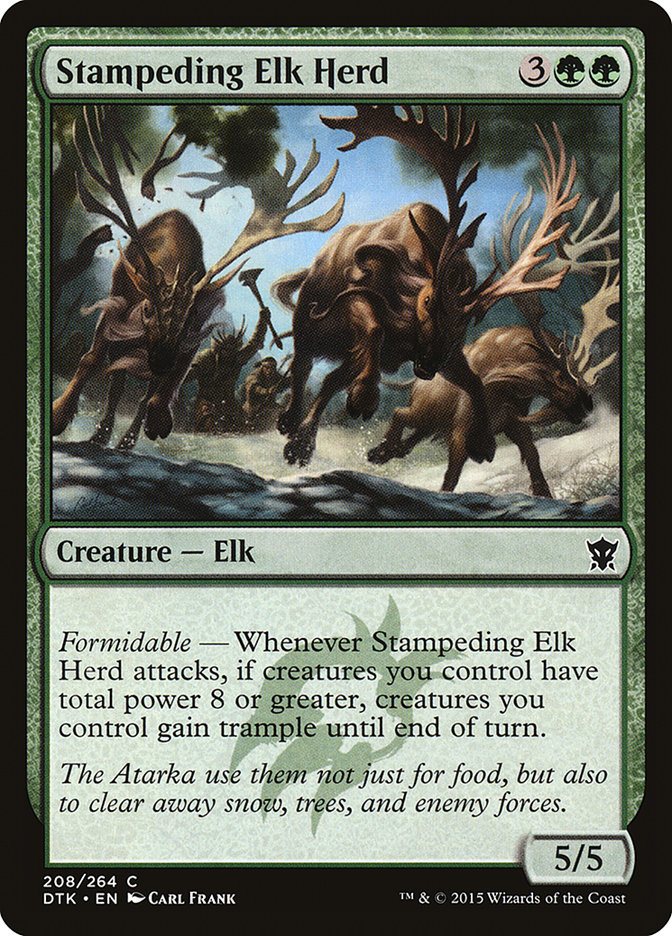
These were totally serviceable big creatures in the five-drop slot. The fact that they were 5/5’s was a much bigger deal than the Formidable trigger in the games that I played. I had a few instances where Trample could be relevant when combined with pump spells, but those pump spells already gave Trample so it didn’t really matter. I can certainly imagine the Herd’s ability coming in handy for more defensively-oriented green decks with big Megamorph creatures, like G/B, but it never came up for me playing G/R.
Harbinger of the Hunt
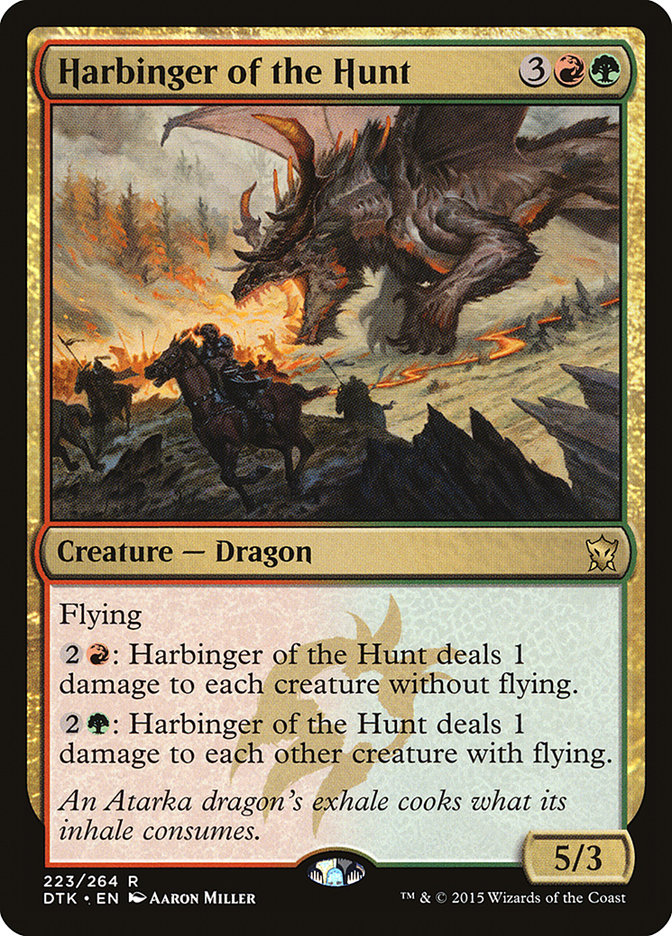
Unsurprisingly, this big rare Dragon was pretty great. The 5/3 body meant that it was vulnerable to a lot of different removal effects, but I never lost a game in which I untapped with it alive. The mini-Earthquake and Hurricane abilities can absolutely wipe out an opponent’s board, or at least force them to play around it very awkwardly. Each effect costing three mana means that you can curve perfectly from Harbinger into activating it twice to kill all face-down creatures. Perhaps more importantly, the anti-flying ability helps shore up what is historically one of the weaknesses of green decks. There are quite a few aggressive fliers around, like Ojutai Interceptor, Misthoof Kirin, and the spawn of Ojutai’s Summons… and Harbinger of the Hunt can pretty much lock them out of the game entirely.
Herdchaser Dragon and Stormwing Dragon
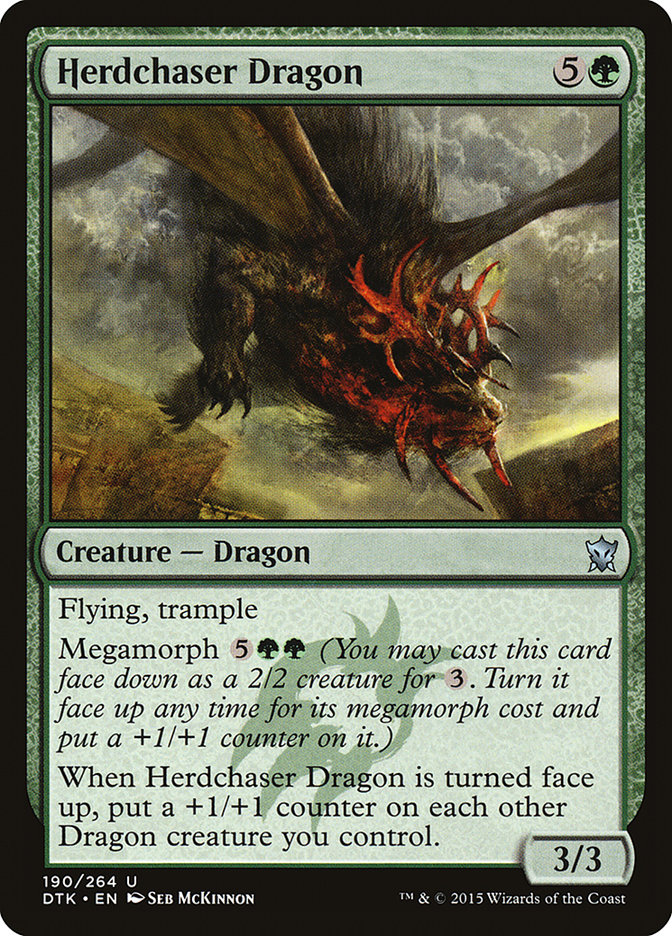
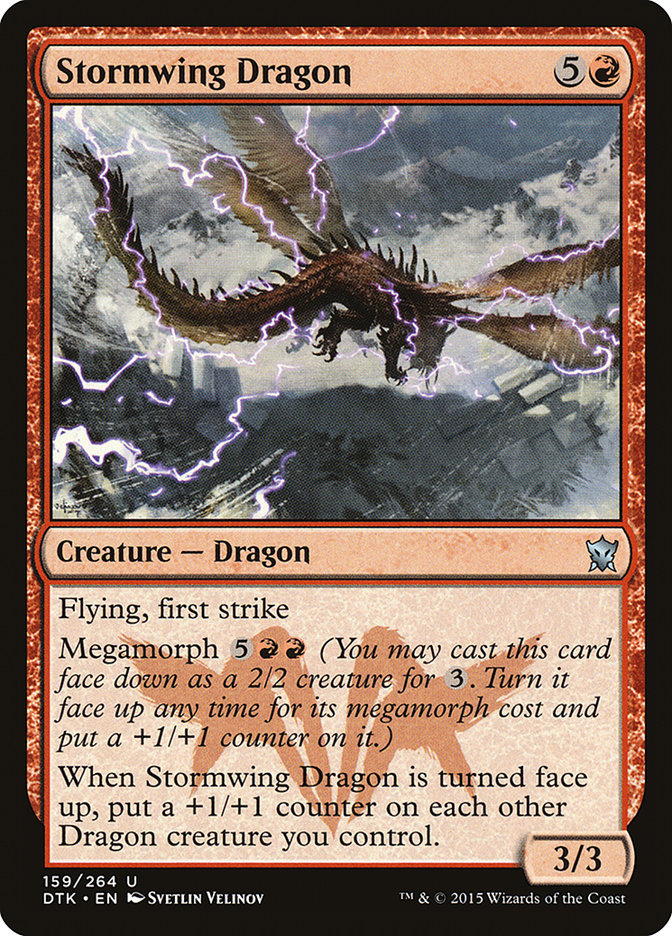
I’m lumping these two together, because they were basically the same card all day – which is to say they were pretty much always just a face-down 2/2 creature. Six mana is a lot to pay for a 3/3 flier, and seven to flip up into a 4/4 flier isn’t much better. I played them in part because I wanted to get a feel for them, and in part because my deck included Draconic Roar and I wanted to be able to enable it. In the future, I’m likely going to avoid this cycle of Megamorph Dragons entirely, since they’re just too slow and inefficient for how the format seems to play out.
Stormcrag Elemental
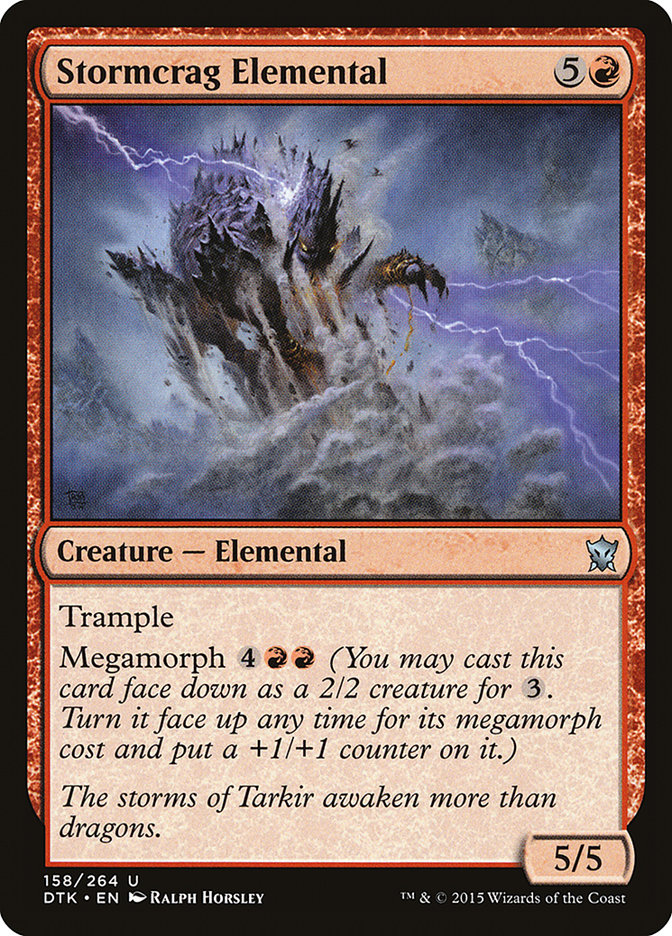
This one, on the other hand, was pretty excellent. A 5/5 Trampler for six mana is a reasonable deal up-front, and flipping up a 6/6 Trampler for that same six mana cost is also quite strong. This is one of the larger Megamorph creatures with a reasonable cost to flip, so most of the time your opponents aren’t going to expect something quite so big and you can often eat a small creature with it as well as get some damage in thanks to Trample.
2 Tread Upon
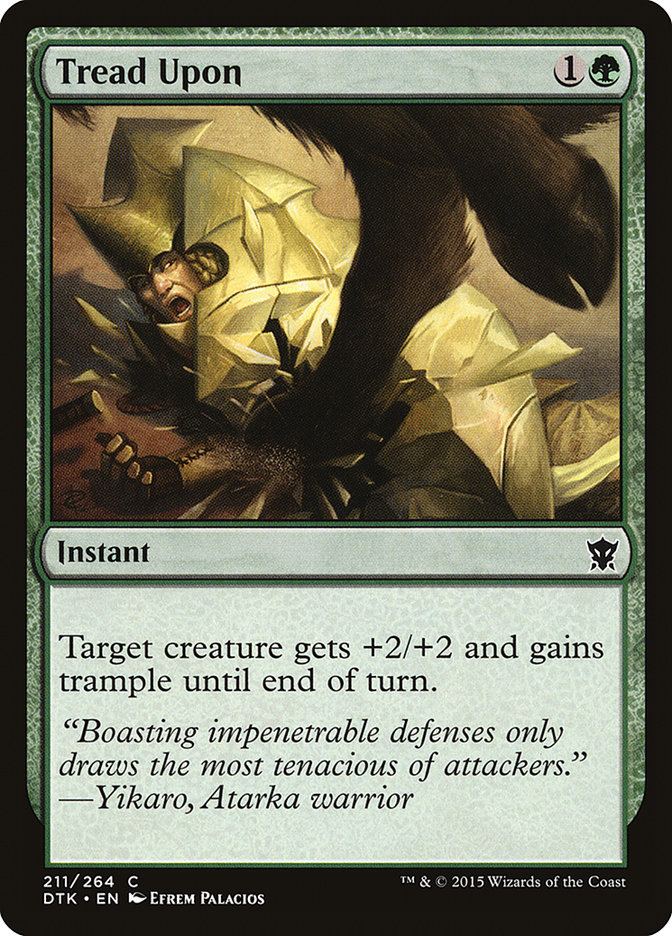
This was one of the best cards in my deck, especially alongside Hardened Berserker as I mentioned earlier. There are a lot of sizable blockers in this format, and an aggressive deck like this one definitely needs ways to help break through. The fact that Tread Upon not only gives +2/+2 but also Trample means that it doesn’t just help your creatures win fights with opposing creatures, it can also finish off your opponent when they’re looking to chump-block one of your bigger ones.
Press the Advantage
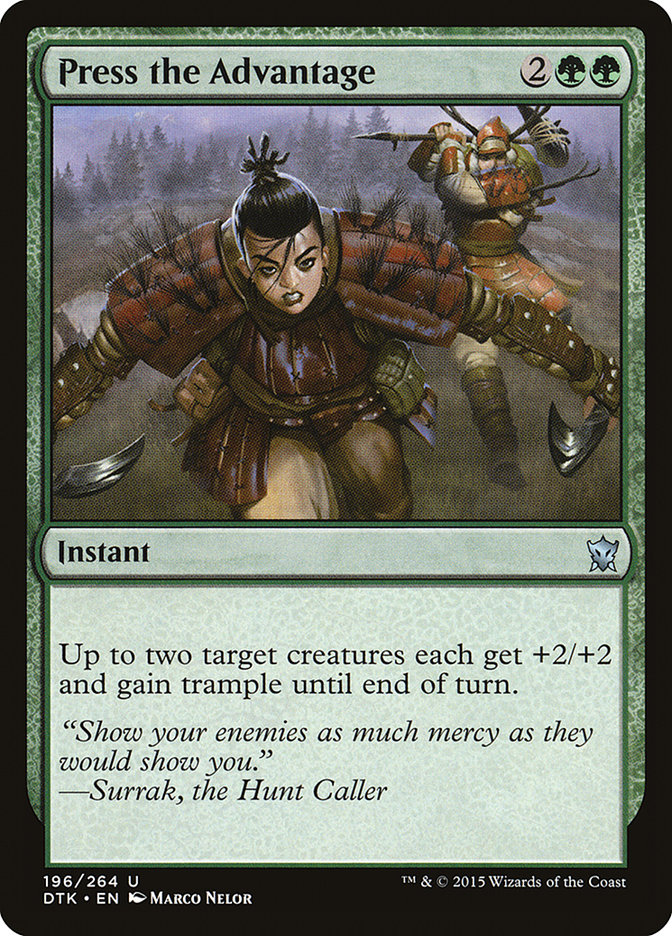
This is pretty much two copies of Tread Upon stapled together, with twice the effect for twice the mana cost. I’m not sure if it was just due to the lower-cost spells working better with Hardened Berserker to generate a tempo advantage, but I found Press the Advantage wasn’t as impressive as I had hoped it would be. When you get full value out of it – pumping two blocked attackers – it’s pretty incredible, but I found that didn’t come up all that much. It can be pretty easy to play around if your opponent knows about it, and casting it comes as such a high cost that you can rarely do anything else with your turn.
It’s possible that my problem wasn’t so much with Press the Advantage itself, but having it in my deck alongside so many other effects that were creature-reliant. With two copies of Tread Upon, a Tail Slash, and an Atarka’s Command already, I found myself in situations where I was flooded on tricks without enough creatures. Speaking of which…
Atarka’s Command
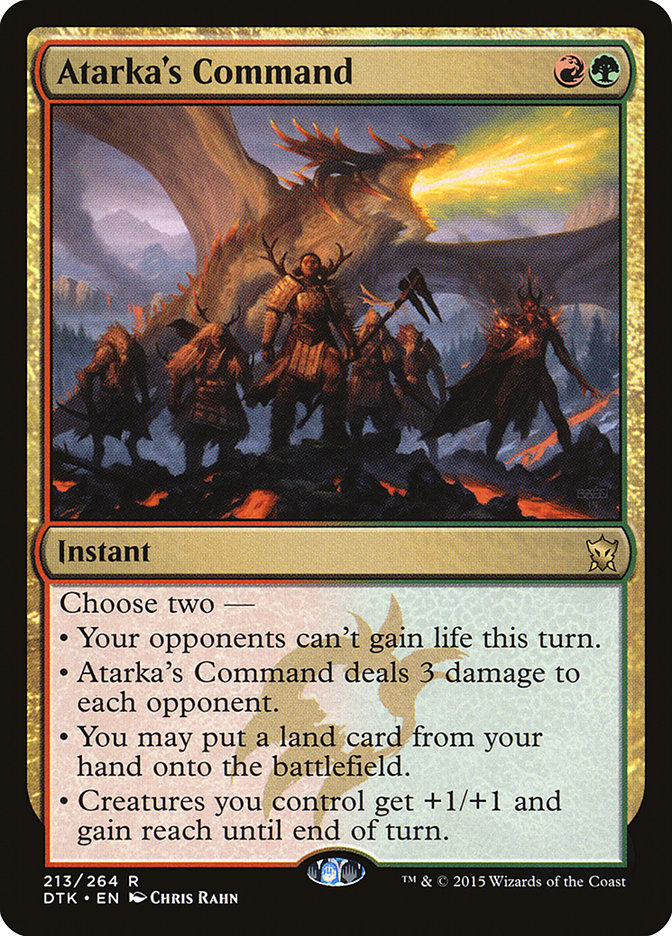
I have to say that I significantly underestimated this card. I got it as my promo card in my seeded pack, and I considered not including it in my deck because it felt like an underwhelming card in Limited. I ultimately decided that even if I only used the +1/+1 and reach mode, it could be useful in a lot of spots, and it certainly was. It turns out that pumping your entire team and dealing three damage to your opponent can end games very quickly. I actually had one game where I played two-drop, three-drop, four-drop, then dashed and Atarka’s Commanded on turn five for way over lethal. I even once used the three damage plus Explore mode to ramp out early four- and five-drops when I had a slower hand.
That being said, I’d still be hesitant to pick Atarka’s Command very highly in draft. It’s the kind of card that seems like it only really fits into one particular kind of deck, and it’s only really useful in games when you’re already at parity or ahead. In the decks where it is good, it’s going to be very good, but I don’t think it’s generally strong enough that I’d want to take it in the first couple picks of a draft and hope things work out.
Tail Slash
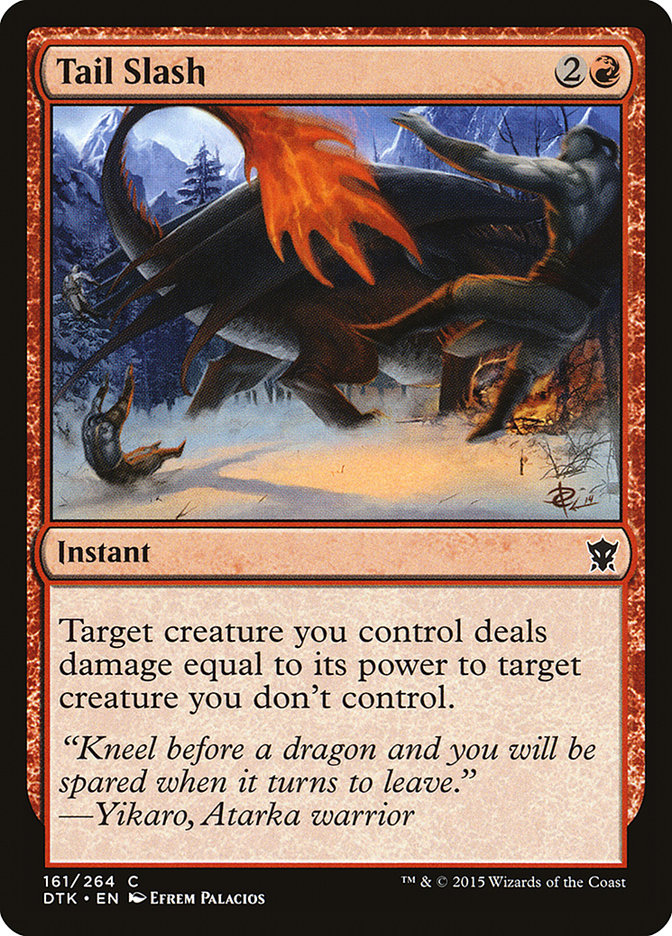
Tail Slash was a fine but unexciting card in my deck. Most of my creatures were fairly small, and I was looking to be attacking as much as possible. That meant that what I was mostly looking for out of my spells was the ability to get past bigger creatures than I normally would be able to with what I had in play. Tail Slash doesn’t really help with that, since it’s only as powerful as your biggest creature in play. It’s certainly a solid card, but its reliance on having a big-enough creature in play to kill whatever your opponent might have – as well as its vulnerability to removal in response – makes me hesitant to want too many of them in my deck.
Sarkhan’s Rage
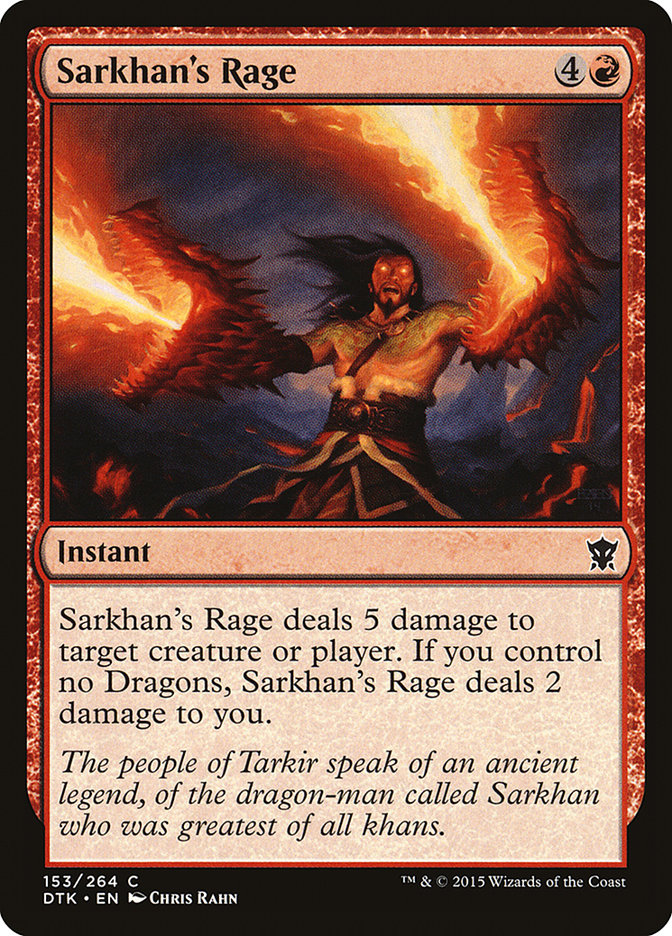
This, on the other hand, was a great removal spell as well as a good way to finish my opponents off. I’d probably only want one copy in my decks – two, max – because it costs five mana, but I was very happy with Sarkhan’s Rage pretty much every time I drew it.
Draconic Roar
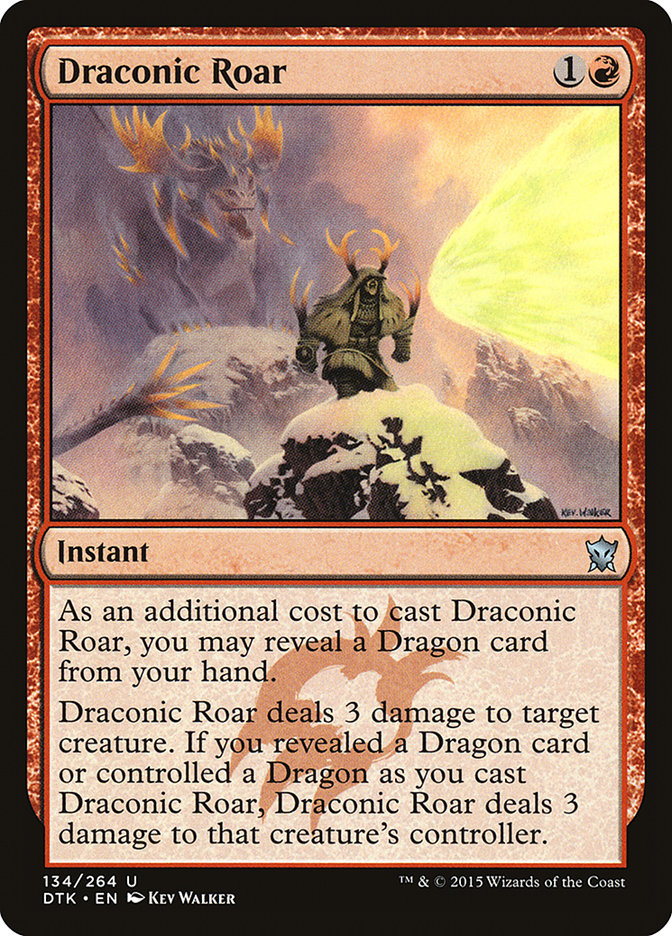
This card is obviously great, and I’d play as many copies as I could get my hands on. I don’t think it’s generally correct to play marginally weaker Dragons instead of slightly stronger creatures in order to trigger the three damage bonus on the Roar, though it was certainly nice every time it happened for me.
Bathe in Dragonfire

Still good. Perhaps even better than before because there are fewer big morphs that flip to get out of range, and more real creatures that die to it.
As for cards out of my opponent’s decks that stood out:
Youthful Scholar
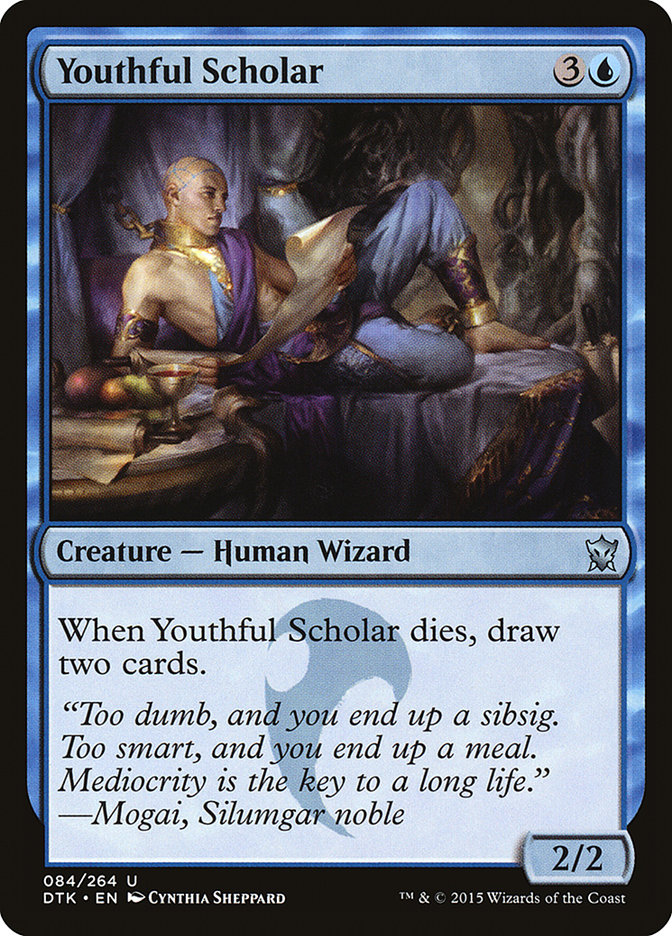
This made attacking on the ground an absolute nightmare. So much of my early offense had two toughness that the scholar was pretty much a guaranteed three-for-one against my deck, to say nothing of the synergies with Exploit. It’s possible that this is worse in the general context of the format than it was against me, but I was very impressed seeing it in action, and how bad can any creature that says “Draw two cards” really be?
Ojutai’s Breath
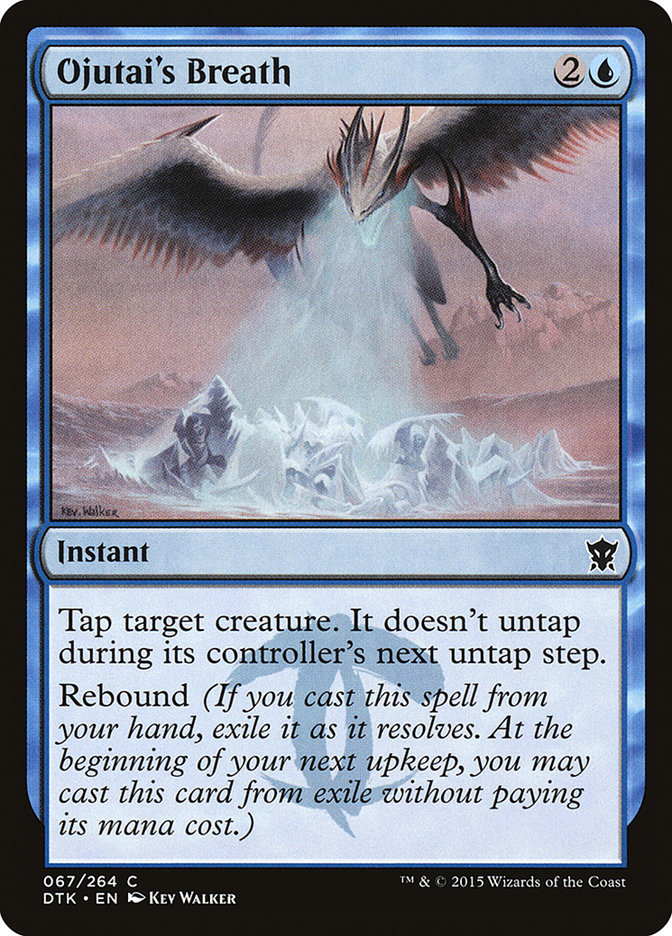
This card can generate some serious tempo swings. I talked about thinking this card had a lot of potential in my preview last week, and it certainly lived up to the hype, winning some of my opponents games that they seemingly had no right to win. It’s decent on defense, but it’s much better when you’re the one attacking since you can lock down two potential blockers for two of your attacks by playing it during your opponent’s end step and getting to rebound it immediately. I expect this to be a central feature of aggressive blue decks, like the archetypical U/W Skies.
The Monuments
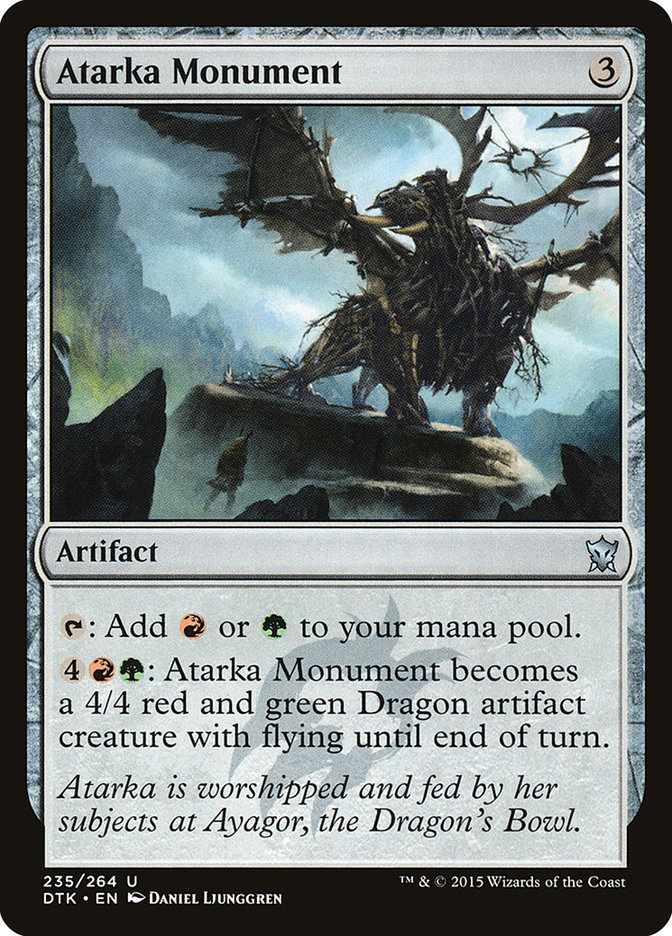
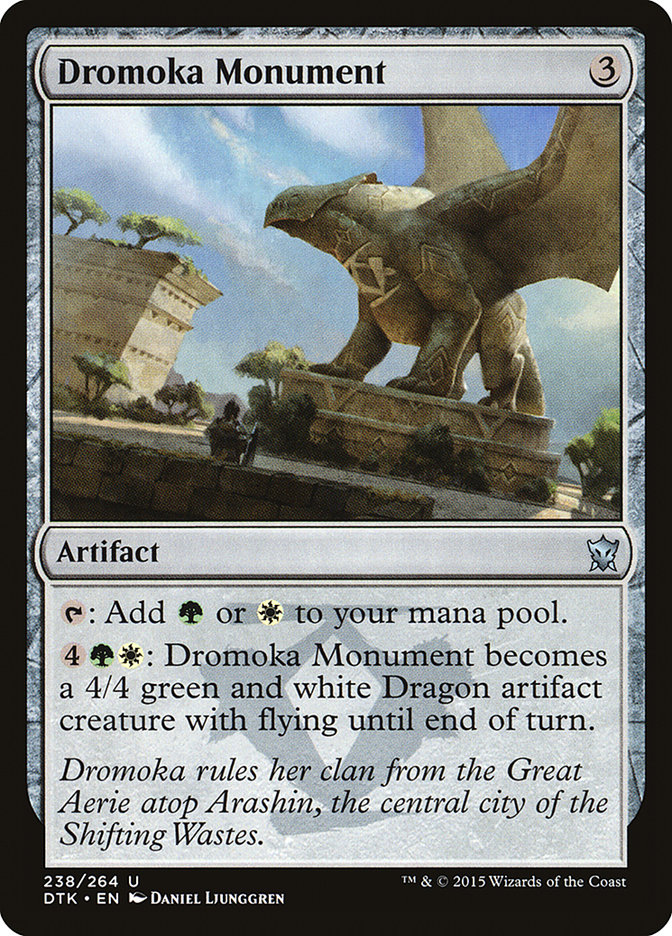
I had a couple opponents play these against me, and they were never good. Six is a lot of mana to activate them, and the format seems fast enough that tapping out during your early turns to play something that doesn’t impact the board can set you very far behind.
Colossodon Yearling
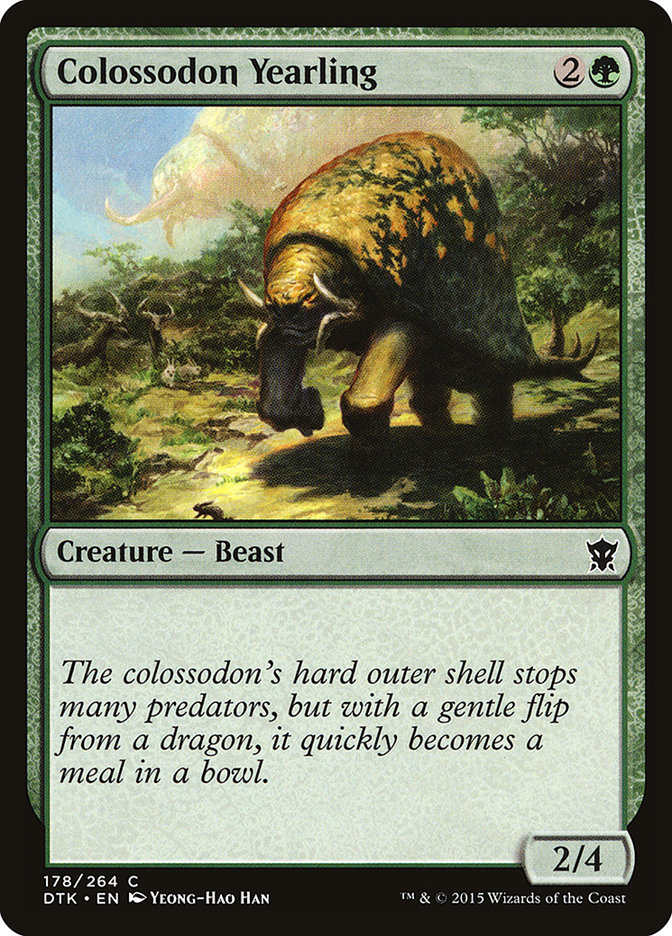
This was almost as big of a roadblock as Youthful Scholar for my deck. My only saving grace against getting totally brick-walled by this little guy was the sheer quantity of combat tricks I had to break through it. I’d expect this to be a staple of the green decks that are looking to go big, since it really does just hold off all of the non-flying aggressive creatures out there.
Kolaghan Forerunners
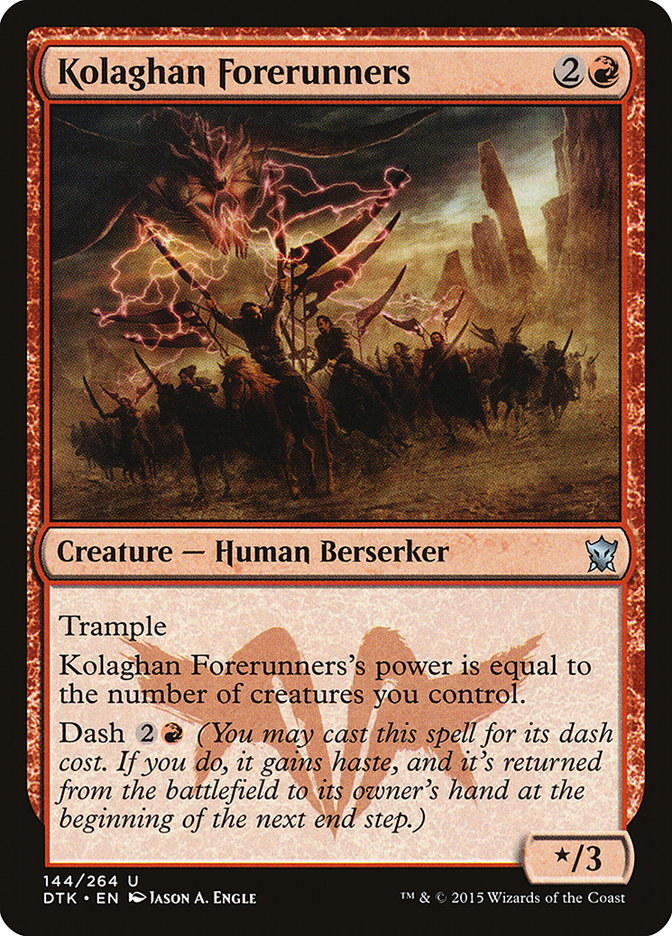
This can do a whole lot of damage out of nowhere. One of the opponents who beat me had two copies of this along with Warbringer, and they suddenly hit me for something like twelve damage in a single turn from what looked like a relatively safe board state. Speaking of which…
Warbringer
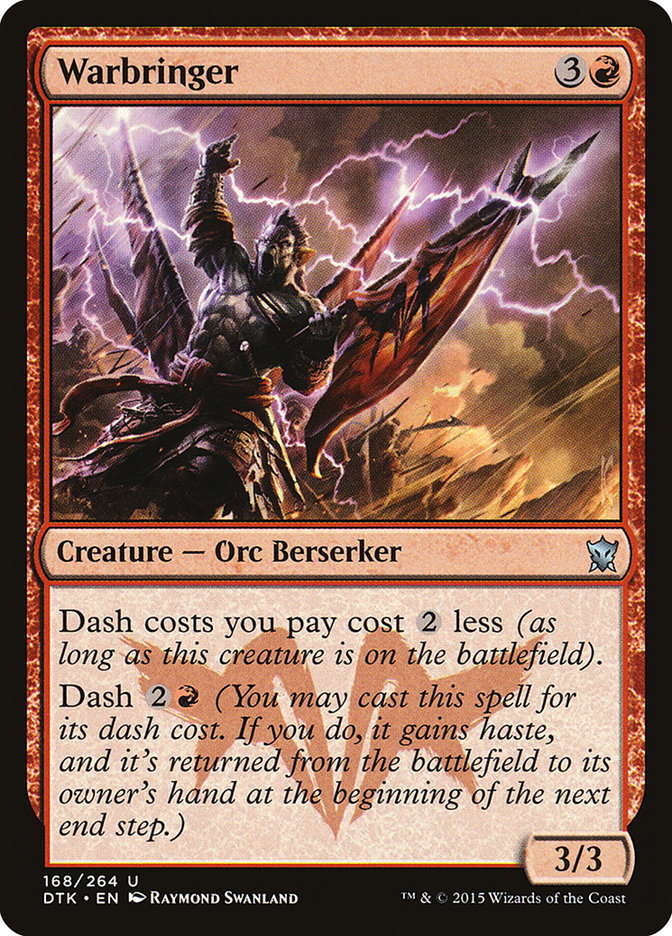
This card seems like it’s absolutely worth picking early and trying to build a deck around. Cost-reduction mechanics are pretty much always powerful, and this one is no exception. This set has quite a few large Dash minions with higher costs and even some with enters-the-battlefield triggers – Warbringer can make all of those very, very dangerous.
Pacifism
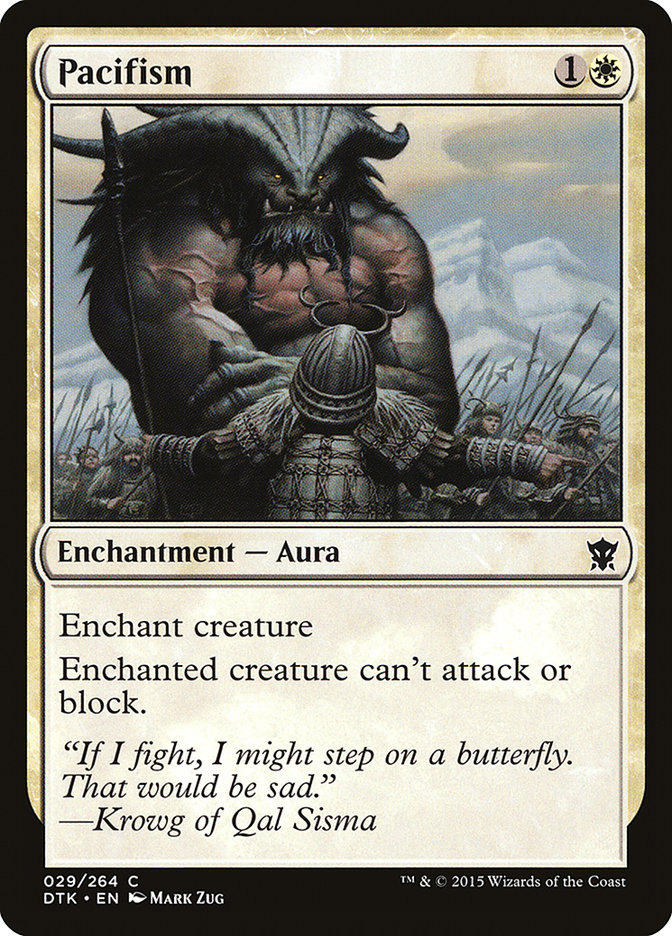
Pacifism stands out as the best removal spell around since it can deal with both early aggressive creatures and Dragons in a way that few other cards can. It is weak against Dash creatures, but that’s a weakness I’m willing to accept. It does mean that you can’t just build a control deck with nothing but sorcery-speed removal effects – you actually have to get some creatures in there to block, which is fine by me.
Creatures attacking and blocking? Dragons everywhere? This is my kind of Magic.
What cards stood out to you in Dragons of Tarkir so far? What cards underperformed?

